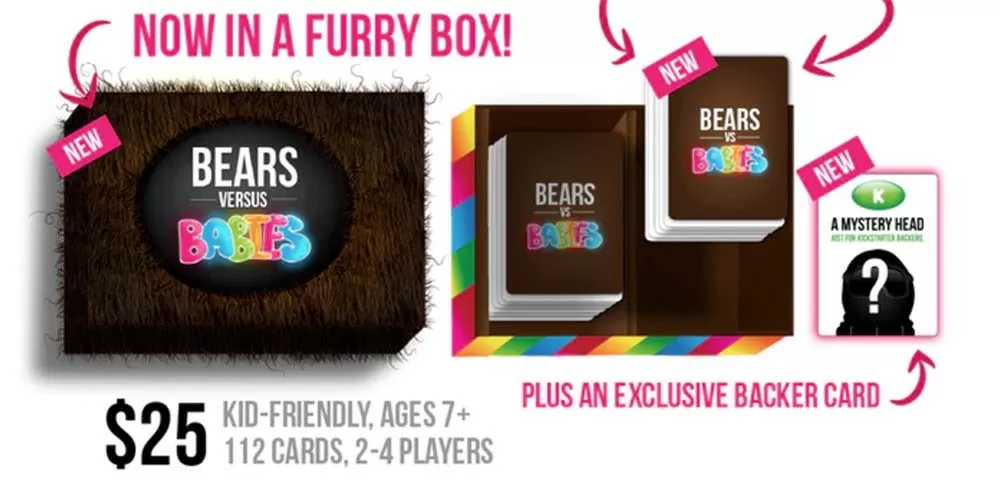PrintNinja - online printing made easy for creators
Stretch Goals: What Are They, And Do I Need Them?

While creators and backers alike generally celebrate Kickstarter’s all-or-nothing funding model, there’s no clear consensus on stretch goals.
Some backers are excited to get a “vote” in the final version of a product, while others see these additional goals as greediness on the part of the creator. From the creator’s side, some see stretch goals as an unpredictable factor that can disrupt a well-planned budget, while others view them as a useful marketing tool and an integral part of funding projects.
The truth is, whether or not you should use stretch goals depends on your campaign and how you want to manage it. Whatever decision you make, it’s critical that you decide before you launch so you can accurately factor your stretch goals into your budget.
We’ll go over the most important considerations to help you decide whether you need stretch goals, how to manage them, and how to plan your campaign.
How do stretch goals work?
As you raise more money and generate more pre-orders, the per-unit printing cost for your game decreases. For example, let’s say that your all-or-nothing goal is $20,000, which is the amount you need to reach to produce your game and rewards. But if you hit $30,000, you’ll be printing enough copies that each one is less expensive—allowing you to add extra cards, higher-quality pieces, or a foil-stamped board.
Unlike your funding goal, stretch goals do not need to be met to produce your game. However, you’ll still need to budget for design, manufacturing, and shipping, because unlocked upgrades shouldn’t cost backers more money.
Stretch goals have a few different purposes and benefits. Be careful, though: if your stretch goal is just to make more money, or to get more backers, you’re doing it for the wrong reasons. Like everything else, stretch goals need to be well-planned, thematically appropriate, and you need to be invested in the idea.
-
Produce a better product.
The main reason to add stretch goals is to enhance the value of your game by upgrading the materials, size, number of pieces, or design of your game.
-
Motivate backers to promote your game.
If your backers want those upgrades, they’ll be motivated to give more or promote the campaign to their friends to help you meet the goal. This enthusiasm may even give you a better chance at reaching your initial goal, whether or not you reach the stretch goals.
-
Reduce risk by making expensive elements optional.
Your primary goal is getting your game funded, and you may have eliminated expensive optional items in order to set an achievable all-or-nothing goal. For example, you may have always wanted foil-stamped cards, but didn’t want to risk the entire game’s success on an element that won’t make or break the game experience. In this case, foil-stamped cards are the perfect stretch goal, which if funded, will enhance the game overall, without risking the entire game’s funding.
-
Keep the excitement going.
Introducing a great upgrade can excite backers and potential backers, even if you’ve already met your initial goal. That positive word-of-mouth translates into more backers and more funding.

When should I reveal stretch goals?
Again, this depends on your game and how you want to market it. If you choose to make the goals visible from the start, you’ll have a better chance at getting backers to make higher donations the first time they reach your page.
On the other hand, if you wait to unveil your goals mid-way through your campaign, you may inspire existing backers to help promote your campaign or “top off” their contribution.
You may also consider sharing one stretch goal at a time to keep backers and visitors focused, versus making all goals and funding amount visible in case your larger stretch goals are more interesting to your audience than the first few.
How should my goals be unlocked?

The most popular approach relies on the funding value of the campaign—when the campaign reaches benchmark amounts, like $25,000, $50,000, and $75,000, new stretch goals are unlocked. This method gives you the greatest control over the stretch goals and makes it easy to estimate funding and ensure that you can afford the included upgrades.
- Time-based stretch goals: Create a sense of urgency by unlocking upgrades if a funding goal is reached within a certain amount of time. For example, you could announce that your foil-stamped card upgrade will only be unlocked if you reach $30,000 within five days after meeting your initial funding goal.
- Backer counts: Unlock upgrades when the project reaches a specific number of backers rather than a dollar amount. It can be trickier to estimate cost for these rewards, since you won’t know in advance what funding level each backer will choose, but it can work well for simple, inexpensive upgrades.
- Social media goals: Set a goal to reach a certain number of likes, shares, or retweets. This can be an effective marketing method, as it encourages your backers to share the campaign with friends, but be careful not to add anything that you won’t be able to afford if those likes don’t translate directly into contributions.
Monetary goals are the safest route, as you can calculate the exact price of the reward upgrades and know with certainty that you’ll be able to afford the upgrade. But using a mix of methods can also be effective, as each type of goal can be used for different marketing purposes to increase your total contributions.
What should I give my backers?
Stretch goals come in two basic forms: rewards that improve the quality of the printed game by upgrading the game’s materials, or those that extend gameplay with additional components.
We looked through the most funded games on Kickstarter to put together a list of ideas:
Game upgrades:
- Upgraded artwork on game cards
- Metal coins instead of wood
- Miniatures instead of meeples
- Plastic tokens instead of wood
- Two-sided game board instead of standard
- Increase size of tokens from 16 to 20mm
- Game box covered in fur
Game extensions:
- Extra cards or other expansion packs
- Specially designed dice bag
- Book of game lore
- Quick-reference guide
A few words of caution here. First, don’t offer stretch goals that should be core components of your game. Backers don’t want to feel that if you don’t hit your stretch goals, they’ll get an incomplete, unplayable version of the game.
Second, approach stretch goals with the same careful planning as the rest of your budget. You’ll need to fully cover the fulfillment, Kickstarter fees, labor, and production time necessary to produce and ship more copies of your game than you initially expected, as well as bigger, fancier, or heavier versions of the core game.
So, are stretch goals right for me?
While you shouldn’t shy away from asking for more money, stretch goals aren’t right for everyone. Skipping stretch goals can make your life simpler and less stressful, as you can focus on promoting your campaign and producing your game.
To be effective, your stretch goals have to be something your backers will be excited about. Balancing high-enthusiasm with low-cost is tricky. By the time you start your campaign, your stretch goals should be as well thought out as each of your rewards, even if will be announced partway through the campaign. Adding a stretch goal impulsively can jeopardize the production of your game and the fulfillment of your Kickstarter rewards.
Now that you’ve got the nuts and bolts of your campaign worked out, you’re ready to start designing your Kickstarter page.
Download this content as an Ebook and read on your tablet.